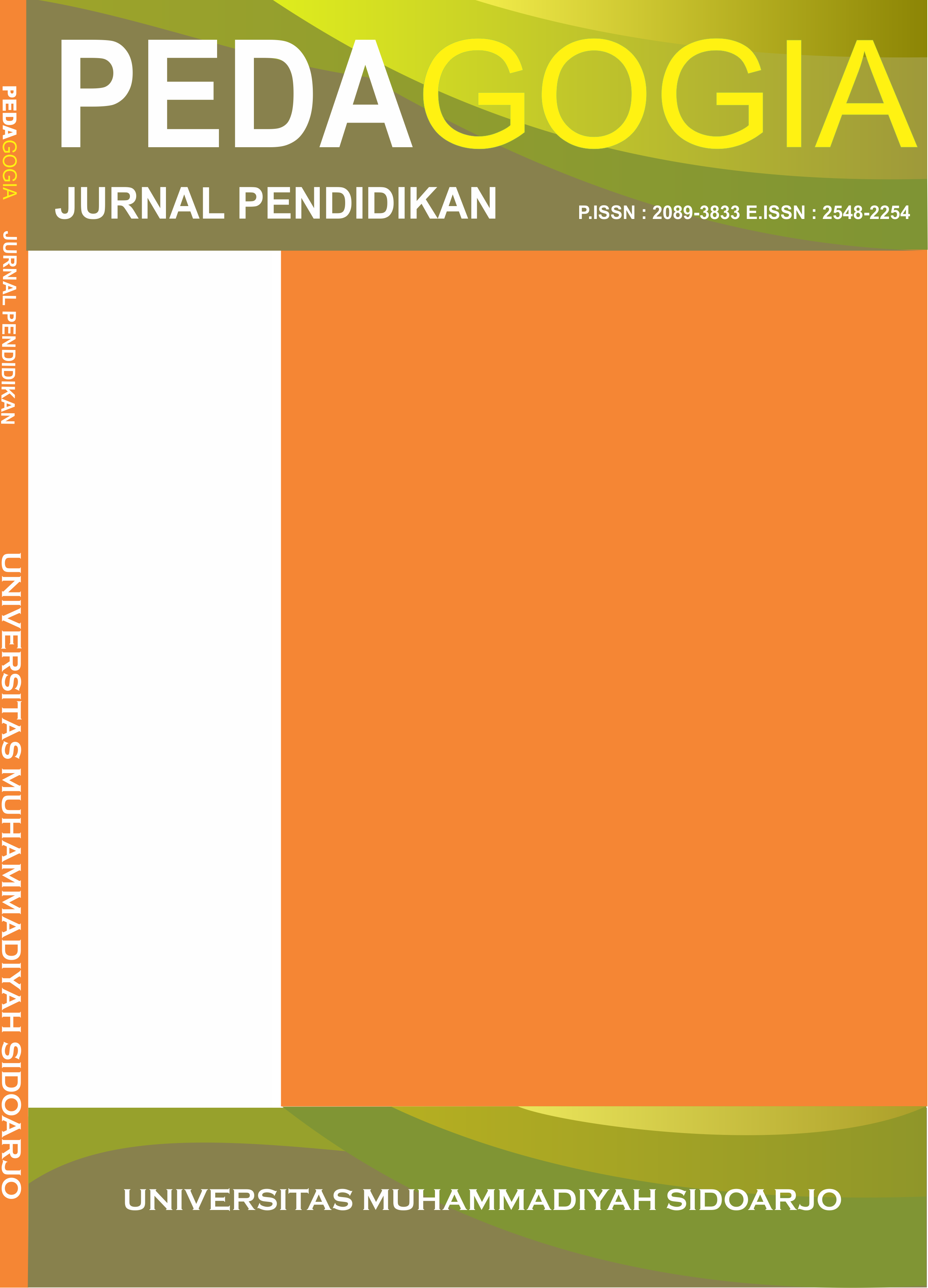Penalaran Proporsional Siswa Kelas Menengah dalam Menyelesaikan Masalah Matematika Ditinjau dari Adversity Quotient
Proportional Reasoning of Middle School Students in Solving Mathematical Problems Viewed From Adversity Quotient
DOI:
https://doi.org/10.21070/pedagogia.v9i1.259Keywords:
Proportional Reasoning, Adversity Quotient, Problem SolvingAbstract
This study aims to describe students’ proportional reasoning profile of junior high school students in mathematical problem solving based on Adversity Quotient (AQ) type climbers, campers, and quitters. This qualitative research was conducted to 22 female students who were in eight grade that used documentation, test, and interview to gather the data. Analyzing the students’ test result and then interviewing them for each category were done for the analysis process. The result show that there are 9.1% climber students, 72.7% camper students, and 18.2% quitter students. The result of this study showed that there were differencies about proportional reasoning activities based on type Adversity Quotient (AQ) climbers, campers, and quitters.
References
Azwar, S. (2002). Penyusuk Skala Psikologi (Bandung: Pustaka Pelajar).
Ben-Chaim, D., Keret, Y., and Ilany, B.-S. (2012). Ratio and Proportion: Researchand Teaching in Mathematics Teacher’s Education (Pre-and In-Service Mathe-matics Teachers of Elementary and Middle School Class).
Sense Publisherv.Brodie, K. (2010). Teaching Mathematical Reasoning in Secondary School Class-rooms. vol. 775 (America: Springer).
Kementrian Pendidikan dan Kebudayaan Republik Indonesia Nomor 65 Tahun 2013 Tentang Standar Proses Pendidikan Dasar dan Menengah, K. . S. L. P. M. P. (2013). Salinan LampiranPeraturan Menteri Pendidikan dan Kebudayaan Republik Indonesia Nomor 65 Tahun 2013 Tentang Standar Proses Pendidikan Dasar dan Menengah.
de Walle, J. A. V. (2013). Elementary and Middle School Mathematics. TeachingDevelopment (American: Pearson).
Johar, R., Yusniarti, S., and Saminan, S. (2017). The Analysis of Proportional Reason-ing Problem in the Indonesian Mathematics Textbook for Junior High School.doi: 10.22342/jme.9.1.4145.5568. https://dx.doi.org/10.22342/jme.9.1.4145.55-68.
Lamon, S. J. (1999). Teaching Fractions And Ratios For Understanding: EssentialContent Knowledge And Instructional Strategies For Teachers (Lawrence Erl-baum: Mathematical and Pedagogical Knowledge).
Livy, S. and Herbert, S. (2013). Second-Year Pre-Service Teachers’ Responses toProportional Reasoning Test Items.Australian Journal of Teacher Education38,17–32. doi: 10.14221/ajte.2013v38n11.7.
Masfingatin, T. and Murtafi’ah, W. (2016). Kemampuan Berpikir Logis Mahasiswadengan Adversity Quotient Tipe Climber dalam Pemecahan Masalah Geometri. Math Educator Nusantara: Wahana Publikasi Karya Tulis Ilmiah Di Bidang Pendidikan Matematika2.
Mullis, I. V. S., Martin, M. O., Foy, P., and Hooper, M. (2016). TIMSS 2015 Interna-tional Results in Mathematics. TIMSS 2015 International Results in Mathematics.
Nugraha, Y., Sujadi, I., and Pangadi, P. (2016). Penalaran Proporsional Siswa KelasVII.Beta Jurnal Tadris Matematika9, 34–34. doi: 10.20414/betajtm.v9i1.2.
Ojose, B. (2015). Proportional Reasoning and Related Concepts: Analysis of Gapsand Understandings of Middle Grade Students.Universal Journal of EducationalResearch3, 104–112. doi: 10.13189/ujer.2015.030206.
Rahma, J. (2006). Penalaran Proporsional Siswa SMP.
Sari, I. P. and Sufri (2014). Analisis Penalaran Proporsional Siswa Dengan GayaBelajar Auditori Dalam Menyelesaikan Soal Perbandingan Pada Siswa SMPKelas VII.EDUMATICA: Jurnal Pendidikan Matematika4, 48–55.
Stoltz, P. G. (2000). Advercity Quotiens. Turning Obstacle Into Opportunities (Mengubah Hambatan menjadi peluang) (T.Hermaya (ed.)) (Indonesia: PT. Grame-dia Widiasarana Indonesia).
U.S., S. (2013). Pengaruh Adversity Quotient Terhadap Prestasi Belajar Matematika.Jurnal Formatif3, 61–71.
Widjaja, W. and Presented at National Seminar UNSRI (2010). Design Realis-tic Mathematics Education Lesson. Design Realistic Mathematics EducationLesson.https://p4mristkipgarut.files.wordpress.com/2010/11/design-realistic-mathematics-education-lessons-wanty-widjaja.pdf.
Published
How to Cite
Issue
Section
License
Authors retain copyright and grant the journal right of first publication with the work simultaneously licensed under a Creative Commons Attribution 4.0 International License that allows others to share the work with an acknowledgement of the work's authorship and initial publication in this journal.








